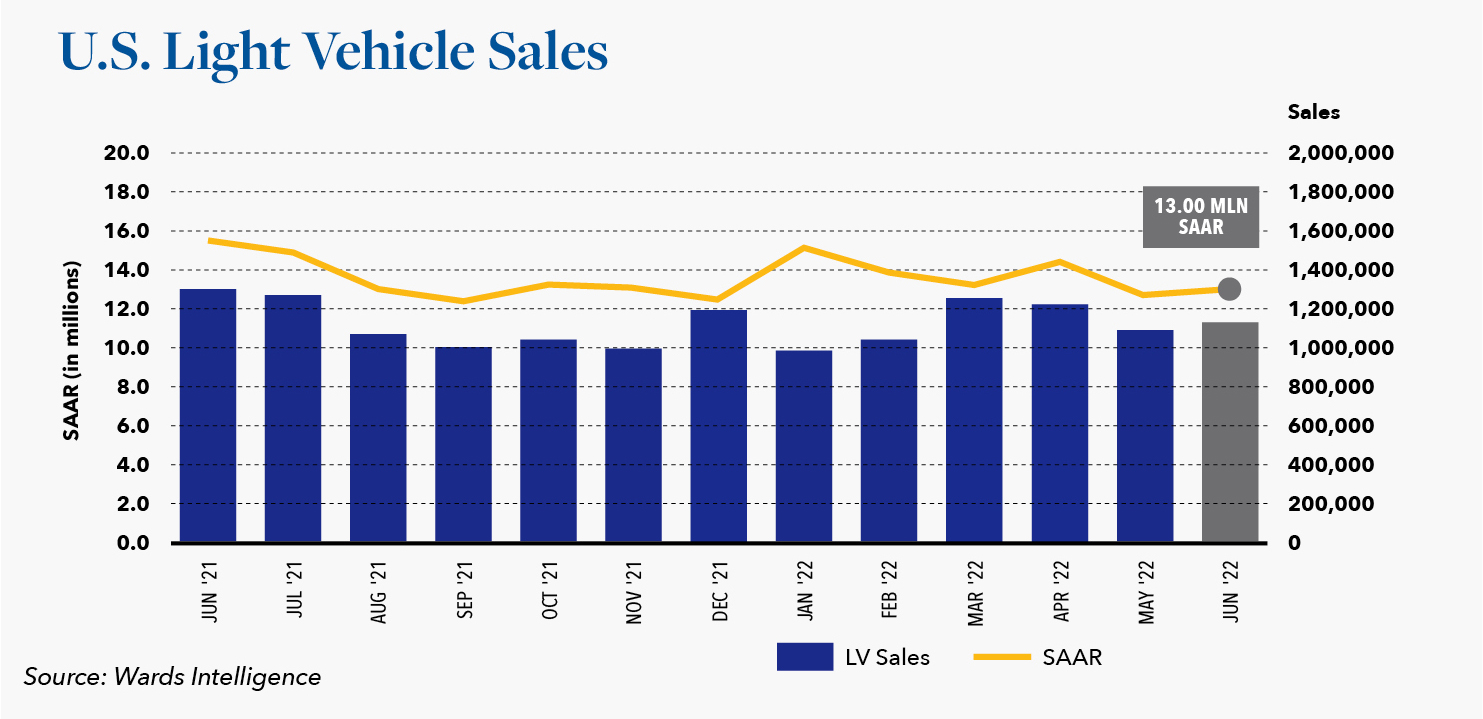Inventory Shortages, the Hero, or the Goat?

July 27, 2022 The U.S. automotive industry sold 1.2 million new cars and light-duty trucks in the month of June, a seasonally adjusted annual rate (SAAR) of 13.0 million vehicles. The June SAAR was marginally better than the prior month but significantly lower than the SAAR of 15.4 million vehicles recorded one year prior. June marks the 12th consecutive month in which the industry’s SAAR fell short of the prior year’s results. The only time this year that the industry’s SAAR exceeded 15.0 million vehicles was in January and it has been pretty much downhill ever since. The industry’s SAAR for the first quarter of this year was 14.1 million vehicles and for the second quarter 13.4 million vehicles. After sinking to 14.6 million vehicles in 2020, the U.S. new car and light-duty truck market managed to sell 15.1 million vehicles in 2021. Early on, most industry insiders had high hopes for 2022, but most of that optimism has now been drained. Automaker and analyst forecasts for 2022 are now between 14.5 to 15.0 million vehicles as compared to their initial forecasts in the range of 16.5 million vehicles.

For the most part, automakers and analysts blame lack of inventory for the industry’s slow recovery, claiming that if they had more vehicles on hand they could sell more vehicles. The industry’s total supply of unsold vehicles in June stood at 1.1 million, less than half the level held in 2020 and less than a third held in 2019 before the onset of the pandemic. In terms of the number of days on hand, the current level (38 days) shows some improvement because sales have been declining, not because the industry has succeeded at building more vehicles. As an example, GM recently reported that it has 95,000 vehicles that cannot be delivered until missing semiconductor chips arrive. As a result of issues like this, dealer inventories have languished around 1.0 million vehicles all year and every month that passes adds to the level of pent up demand. Ford Motor Co. now claims to be sitting on a sales order bank of roughly 300,000 vehicles and about 50% of all vehicles are pre-sold before they ever arrive at a dealership.
Right now, this pent up demand may be one of the industry’s few positive takeaways. In June, the average transaction price of a new vehicle topped $48,000 and the national average price of gas in the U.S. surpassed $5 per gallon. In the past, consumers could offset additional high costs by extending the term of a loan. That was when the cost of money was relatively cheap. Hoping to avoid a “hard” landing, however, the Federal Reserve has been executing its series of rate hikes that have now contributed to higher finance costs. As a result, gone are the days of “zero percent” finance offers. If a hard landing is unavoidable, the auto industry may be glad it is not sitting on a pile of inventory like it was in 2008 and the pent up demand may be the bridge that the industry needs to avoid the potholes (read bankruptcies) of the past.

For further information, please contact Keith Spacapan at 847-313-4722 or kspacapan@hilcoglobal.com.




